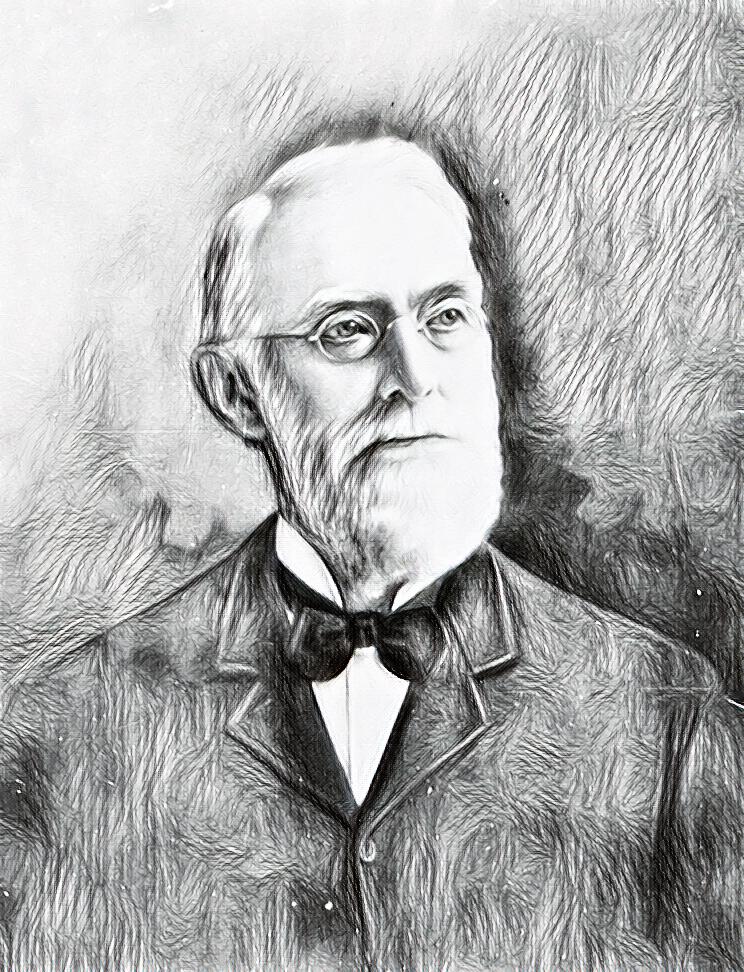Lester Pelton
The California Gold Rush, which took place from 1848 through 1855, brought thousands of men and women from the eastern states and around the world to America’s west coast in search of fortune and prosperity. While a lucky few did find their fortunes in the gold itself, others found it through opportunities in related services and businesses, such as lodging, transportation, engineering and mining equipment.
Lester Pelton was among the throngs of individuals who aimed to take part in this historic event. Born in Vermilion, Ohio, in 1829, he arrived in California via wagon train in 1850 where he found work as a fisherman on the Sacramento River. Three years later he began working in the gold mines in towns along the Yuba River such as Camptonville, Grass Valley and Nevada City. In 1864 he became a carpenter and millwright.
By the mid-1850s, gold mining had steadily progressed in the region to become a large-scale industry requiring serious capital. Mining companies were regularly processing many tons of ore and sending mining crews deep underground, thus they needed a great deal of power to pump air into tunnels and provide power to drive equipment. Much of the power they used was supplied by steam engines, requiring a constant supply of firewood; or water turbines, which were driven by fast jets of water dropped from a reservoir above.
Eventually, however, firewood supplies began to shrink and therefore became more expensive; water got more expensive as well as many turned to this resource amid growing competition in an ever more crowded marketplace. Pelton, meanwhile, had quietly begun developing a timely idea that would help alleviate this problem, and, indeed would help to revolutionize the use of a water wheel as an efficient means for generating power.
According to historical accounts, Pelton became inspired when he was watching a spinning water turbine one day and the component holding its wheel onto its shaft slipped. This threw off the wheel’s alignment, and the water jets pouring from the reservoir above the wheel began hitting the cups near the edges, rather than in the middle as they were designed to do. Pelton noted that the turbine actually began turning faster. He is said to have been further inspired when he watched a neighbor chase a cow one day with a hose, and when the water jet from the hose hit the animal’s grooved nose, the water split into two separate streams.
These instances helped Pelton to come up with a relatively simple, yet ingenious, plan. The result was the Pelton wheel, otherwise known as the impulse water turbine. The wheel essentially uses cups, or buckets, that are split down the middle by a metal divider, so that in effect two cups are mounted side-by-side at each “spoke” in the wheel. A high-pressure water jet aimed at the center of each bucket is split by the divider to hit each of cup, one on the left, the other on the right.
The design takes advantage of a mechanics principle known as impulse; the impulse of a force is defined as the product of the force and the time during which it acts. This is in contrast to water turbines that were made up until this time; all earlier versions were reaction machines that operated off of water's weight or pressure. Pelton's invention operated off a high-velocity water jet’s kinetic energy. The advantage of Pelton’s design is that additional power results from targeting water at the wheel’s periphery; his wheel achieves around 90 percent efficiency.
Pelton developed a prototype of the free-jet water turbine while living in Camptonville, in California’s Sierra Nevada region. The simple model comprised a bicycle wheel outfitted with tin cups. He demonstrated his invention in Nevada City in 1878 and impressed local miners, who quickly understood the concept of his new design. The Pelton wheel was first used at the Mayflower Mine in Nevada City, California in 1878.
A U.S. patent was issued to Pelton 1880. Shortly thereafter, the Nevada City Foundry began to manufacture the wheels and ship them all over the world. In 1888, with partners, Pelton established his own firm, the Pelton Water Wheel Company, in San Francisco. Many others made subsequent versions of Pelton’s original design, with some claiming uniqueness, such as Samuel Knight, and others patenting significant improvements, including William A. Doble, who became chief engineer of Pelton’s company in 1912.
Pelton died on March 14, 1908, in Oakland, CA. The free-jet water turbine lost much of its appeal in the 1950s with the advent of diesel power, but manufacturers still supply them, and it is still possible to view Pelton wheels in action today in various locations around the world.


